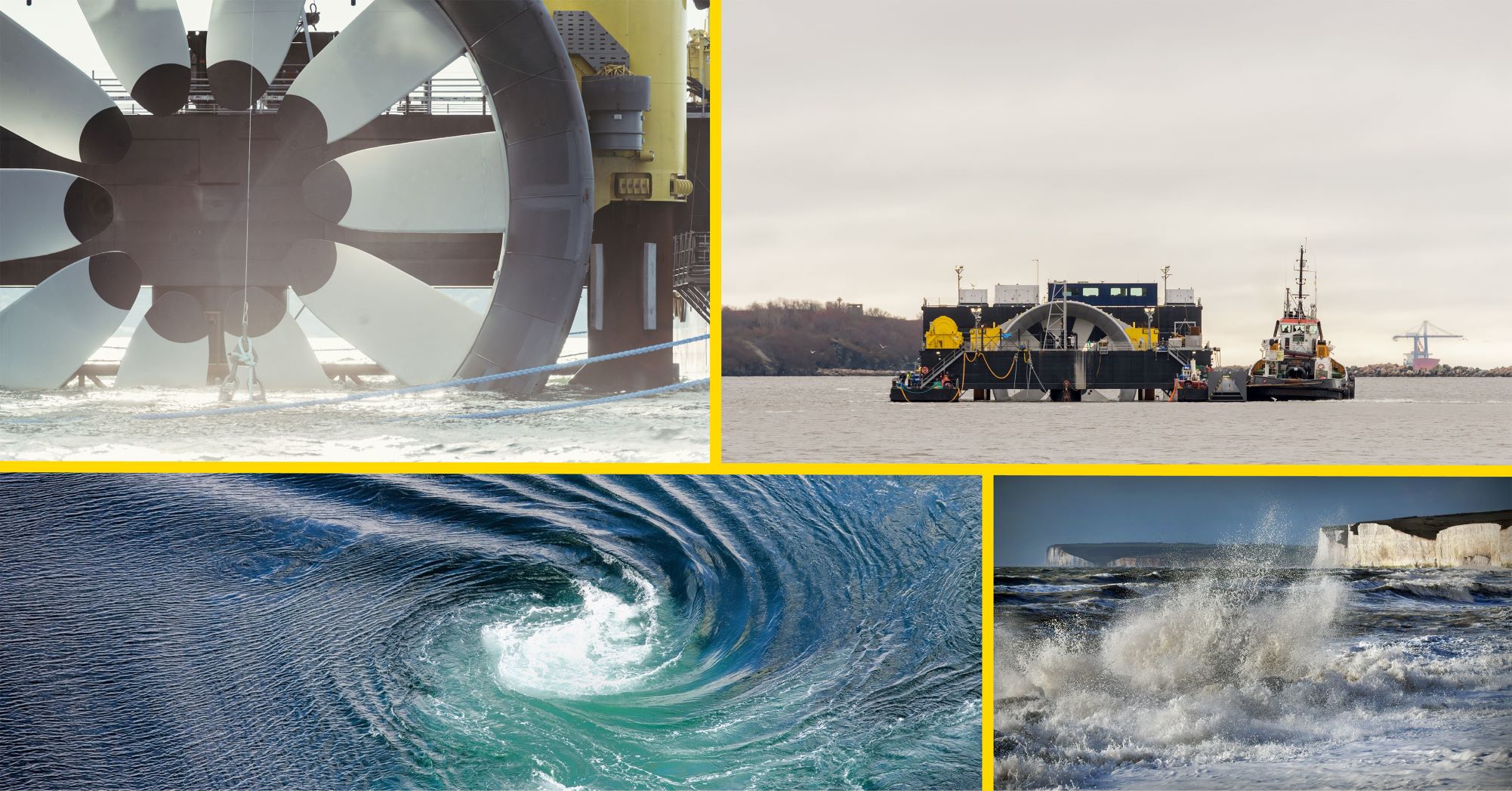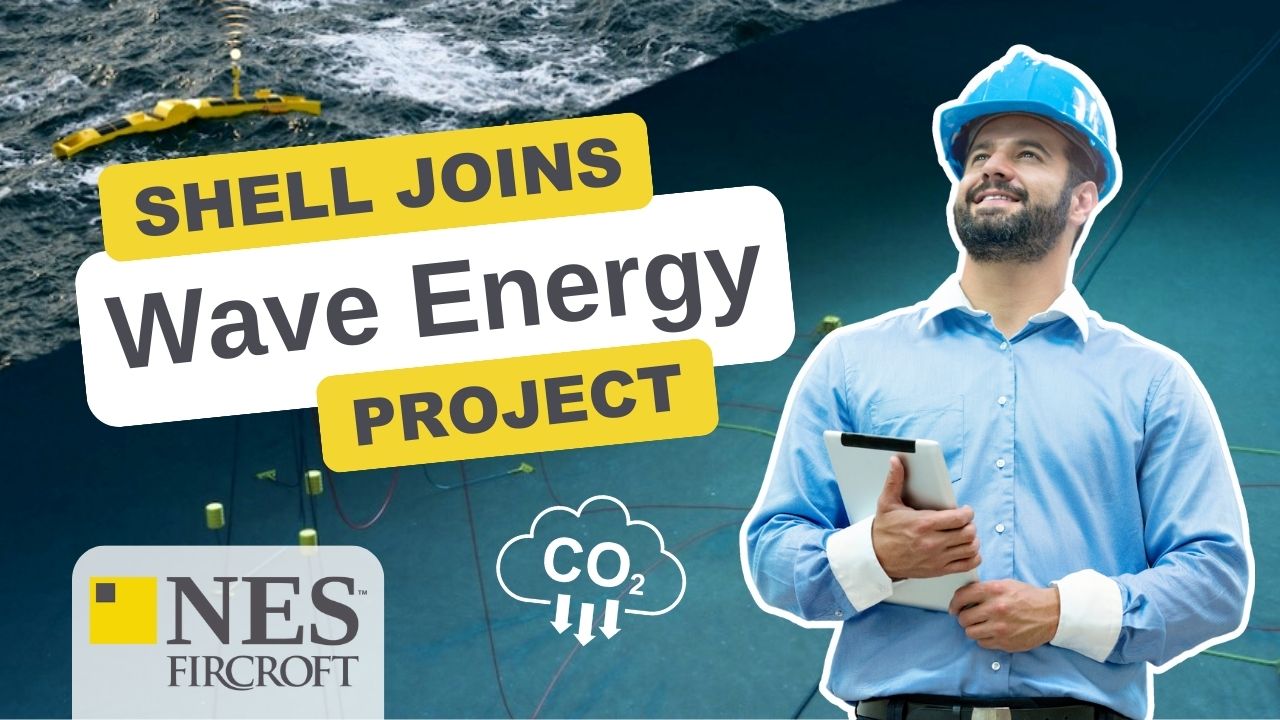Building A Lower Carbon Future – Tidal Power
21 Dec, 20205:27Tidal power isn’t widely used to generate electricity, but across the world, it’...

Tidal power isn’t widely used to generate electricity, but across the world, it’s thought tidal technology could unlock 3,000 gigawatts of untapped energy potential. For example, the UK's tidal power resource is estimated to be more than 10 gigawatts (GW), which is about 50% of Europe's tidal energy capacity.
So, what role can tidal power play in a lower carbon future and why isn’t it more popular?
How does tidal power work?
Despite the slow adoption of tidal power as an energy source, historically the technology behind it has been in use for centuries. The earliest records date back to the Middle Ages and Roman times when waterwheels and tide mills were used to produce grain. It wasn’t until more recent times that this technology was repurposed to create electricity.
Tidal power works by converting energy from tides, generally into electricity. To put it simply, moving water powers turbines, which in turn generates electricity.
Tidal energy can be created in different ways:
- Tidal barrages - essentially a dam which slows the movement of water to and from the sea. The water passing through moves turbines to generate electricity.
- Tidal stream generators - are very similar to wind turbines except they sit below the water surface instead of above or on land.
There are also some suggestions for the use of tidal technology that is currently, purely theoretical:
- Tidal lagoon – a new tidal energy that is entirely artificial. This requires circular retaining walls to be constructed and embedded with turbines to capture energy - water is then pumped around. The first tidal power station of this type was due to be built in Wales (Tidal Lagoon Swansea Bay) but was cancelled.
- Dynamic tidal power – a theoretical technology that exploits the interaction between potential and kinetic energies in tidal flows. Long dams would be built out from the coast into the ocean and tidal phase differences would be introduced. This would lead to water-level differentials causing oscillating tidal waves to run along the coast which contain powerful currents that could be used to power a turbine.

What are the pros of using tidal power?
Although Tidal power is not yet a widely used form of energy generation and many uses of the technology are still purely theoretical, it’s widely recognised that tidal power has major future potential especially when it comes to building a lower carbon future.
- Tidal power is consistent - although the amount of wind or sun expected can, to some degree, be predicted the level of accuracy pales in comparison to the prediction of tidal patterns. Tides happen at the same time with such regularity that they can be predicted years or even decades in advance meaning the amount of power available from this source can be predicted more accurately than other energy sources.
- Tidal power is sustainable - like many other forms of renewable energy, the ability to use tidal power to generate electricity won’t run out as long as we have the sun and moon. By contrast, our supply of usable traditional energy sources is finite.
- Tidal power is comparatively cheap - in the long term, once a tidal-power system is up and running, it’s considered cheap to maintain when compared with other power generation technologies. On average, operational and maintenance costs are lower and tidal schemes can last up to 100 years meaning they outlast the likes of wind farms and solar power schemes.
- Tidal power is more energy efficient - when compared with other energy sources, tides have extremely high energy and very little power gets wasted in the process of converting kinetic energy into electricity.

Why isn’t Tidal Power more popular?
Despite the pros, countries have been slower to invest in tidal power than other renewable energy projects for a variety of reasons:
1. Tidal technology is considered expensive
Initial set up costs are considered expensive when compared with other energy sources making it more difficult to achieve investments and funding even though tidal power plants have low maintenance costs and extremely long project running times. In the short term, it’s difficult for private investors to generate a profit meaning investment in tidal power has, so far, only been conducted by governments as opposed to the many energy companies that fund various other projects.
However, it’s worth noting that governments can also struggle with funding limitations which can delay project development.
2. There are limited sites suitable for tidal power plants
On top of this, there is generally limited availability of sites with sufficiently high tidal ranges or flow velocities, for new projects to set up which constricts opportunities for governments and investors to implement tidal power plants into the energy grid.
Tidal sites must also be close to the shore which impacts the aesthetics of the local area meaning development could also come up against scrutiny from populations.
3. Environments can be too harsh for tidal technologies
Saltwater environments can be quite harsh which could lead to maintenance issues. It’s also worth noting there are local ecosystems to contend with – the ocean/sea is full of plant and animal life that could ultimately interfere with tidal devices.
As well as the ecosystem potentially causing damage to the devices, the tidal technology could also cause harm to the ecosystem, if not done carefully. The devices have the potential to reshape the coastal environment threatening the habitats of species living there.
Do the cons of tidal power outweigh the pros?
As innovations and investments increase, many of the cons are being addressed. For example, recent technological developments and improvements, (such as dynamic tidal power and tidal lagoons) indicate that the total availability of tidal power may be much higher than previously assumed which would bring down costs to more competitive levels. This means tidal power could follow a similar trajectory to the likes of wind and solar power which surged in popularity over the last decade after experiencing decreasing costs to manufacture the technologies needed.

What countries are leading the way with Tidal Power?
Due to the slow adoption of tidal power, only a few tidal power plants in the world are operational.
Europe was the first region to use tidal power commercially – in 1967 France installed the first tidal power plant known as Brittany’s Rance Estuary. However, this idea was first conceptualised in 1920 when the UK became the first country to suggest the power of the tides could be utilised to produce electricity. The UK is still one of the biggest adopters of the technology to this day.
For example, the Liverpool City Region Combined Authority is bringing forward plans for a £3.5bn Mersey Tidal Barrage, which could power 1 million homes. The authority has put forward £2.5m to develop the scheme to the planning phase. However, the City Region’s Mayor Steve Rotheram has previously pointed out securing funding for nationally significant infrastructure schemes such as these are challenging, given the project period and payback lasts for longer than 35 years. Tidal barrage projects are also being considered around Morecambe Bay
Over in Scotland, Nova Innovation has been granted permission to build a tidal project at the Bay of Fundy, in Nova Scotia. a total of 15 tidal stream turbines would be installed by the year 2023. The project, according to the firm, will produce enough electricity to power 600 homes.
However, the largest tidal power station in the world is in South Korea - the Sihwa Lake Tidal Power Station generates 254 MW of electricity.

Can Tidal Power help to build a lower carbon future?
Although tidal power is yet to surge in popularity, continuing technological advancements have led to a rise in power produced from the ocean. For example, there was a 13% growth in 2019, which is much higher than the growth experienced in previous years.
However, for tidal power to truly make waves in the energy industry, there needs to be significant investments in research and development, government policies and crucially, the speed in which a project could be deployed. If projects could become approved and set up quicker, it would lead to greater investment security.
NES Fircroft and supporting the energy industry
At NES Fircroft, we’re excited to see how the energy industry is transforming and adapting to new energy sources. Our depth of expertise in the sector spans 50 years and in that time, we’ve supported thousands of innovative and cutting-edge projects, as they powered the progression of the energy industry.
If you’re looking for skilled personnel, NES Fircroft is proud to be the world’s leading engineering staffing provider. With over 100 offices in 45 countries, we provide tailored staffing solutions, sourced from a global talent pool by a dedicated, discipline specific team of consultants.
We work on some of the most exciting energy projects globally, meaning we have plenty of job opportunities for engineers looking to enhance their energy careers.









